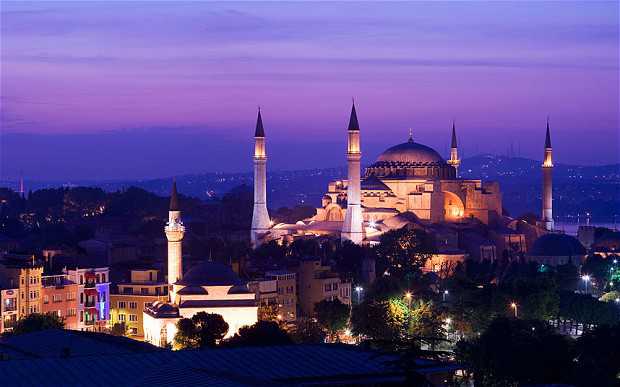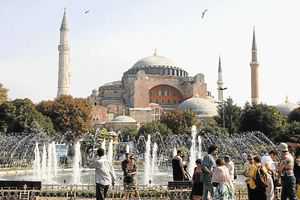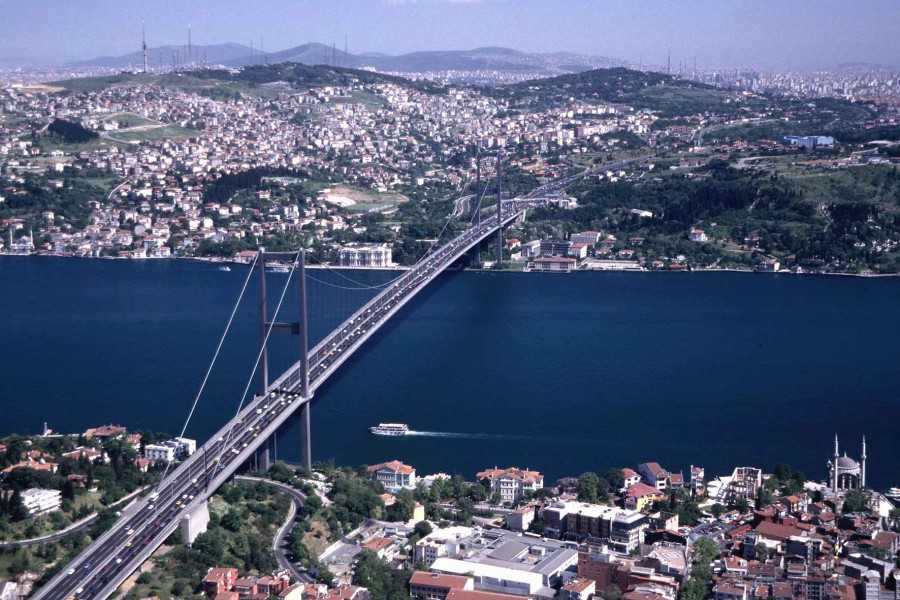Navigating Turkey
By ANDREW FINKEL
ISTANBUL — G.P.S. navigator devices have started popping up on the dashboards of Istanbul taxis, but I’ve assumed that, like furry dice and troll dolls with wobbly heads, they are fashion statements more than tools. I’ve never seen a driver use one unprompted or even consult a conventional street atlas.
Maybe drivers don’t bother because Istanbul’s municipal authorities change the names of streets with arbitrary frequency. My own street, less than 50 meters long, was renamed from one type of flower to another just three years ago, the fourth change since 1939. The other day I was informed that our house number had also been changed — from 4 to 6 — which is odd because there is only one other house on the street. An astonishing 12,000 villages, or 35 percent of the country’s total, were renamed between 1940 and 2000. Many have been Turkified from Greek, Armenian or Kurdish. In the other cases, the reasons for the changes are unclear.
By far the greatest hurdle to cartographic literacy in Turkey is that officialdom still regards maps with the same sort of Cold War suspicion it once had for Polaroid photos of tank traps or lemon-juice sketches of naval yards. This is an expression of the view that information is power and so is best released sparingly. The military’s General Command of Mapping decides whether a map is in the public interest or could be “exploited in the international arena,” and there are stiff penalties for those who disagree. In practice, this prohibits the publication of maps at a scale larger than 1:200,000 — where one centimeter represents two kilometers — a degree of precision more than adequate if you are driving from town to town but not if you are rambling from hither to yon. The famous British Ordnance Survey paper maps, beloved of British hikers, are typically 1:25,000.
There are exceptions. Some firms may produce detailed city maps under special license and provide mapping data for commercial use. The Turkish military issues large-scale maps that, despite being marked “TOP SECRET,” find their way to the academics or road builders who need them most. And hotel clerks happily provide guests with fold-ups that show the way to the Blue Mosque and back. But Turkey is the only place I’ve been in Europe with no public contour maps at a scale of at least 1:50,000.
This is strangely anachronistic in the Google era, when satellite imaging can spot a dachshund on its daily run and Soviet military maps of Turkey at 1:100,000 are freely available on the Web. The Turkish legislation dates back to 1925, when maps were printed on paper and not stored as vectors in digital code. But today the villains bent on using maps to do harm can get their hands on all the data they need, so it’s tourists, off-road bikers, archaeologists and guardians of the countryside who suffer. And in a natural disaster, keeping the 1:25,000 maps under military lock and key means more lives lost.
The now-legendary example of how mapping can come to the rescue was Haiti during the 2010 earthquake. With breathtaking speed, members of Open Street Map — a voluntary Wiki-army of cartographers around the world — transformed up-to-date images taken by aircraft and satellites into maps that showed not only streets but exactly which streets were blocked by collapsed buildings or bridges. The information was triangulated with on-the-ground data from aid workers trying to reach people buried under rubble: their frantic text messages were translated by the expatriate Haitian community online.
Crowdsourcing, or turning the interested man or woman on the street — and the Web — into a mini-Mercator, is the way of the future, according to Suha Ulgen, who advises the U.N.’s chief information technology officer on how to use maps for humanitarian responses. A Turkish national, Ulgen tried to repeat the Haiti experiment during the recent earthquake in eastern Turkey. “Google maps just didn’t show enough detail for the worst-hit town of Ercis,” he said. So with the private satellite-imagery company Digital Globe providing the images and Open Street Map interpreting the data, he set to work.
The result was an instant digital map of Ercis brimming with all the information the rescuers needed. Yet it only had a limited impact. The emergency services were too distracted, and in some cases local responders were too busy rescuing their own relatives to take on a new technology.
The answer, Ulgen concluded, is to raise map-awareness before disaster strikes, especially in a country as seismically active as Turkey. This means claiming maps as a right rather than something the authorities let us see on a need-to-know basis.
I’m doing my bit. Now, whenever I get into a cab with a sat-nav, I insist that the driver turn it on. On a recent sortie, I was trying to get to an address at the periphery of Istanbul’s main airport. “It’s no use,” the cabbie told me after the screen came up blank. “It’s a classified zone.” We got there eventually, but the traditional way, following his nose and rolling down the window to ask for directions.
Andrew Finkel has been a foreign correspondent in Istanbul for over 20 years, as well as a columnist for Turkish-language newspapers. His latest book, “Turkey: What Everyone Needs to Know,” will be published next year.
via Navigating Turkey – NYTimes.com.





